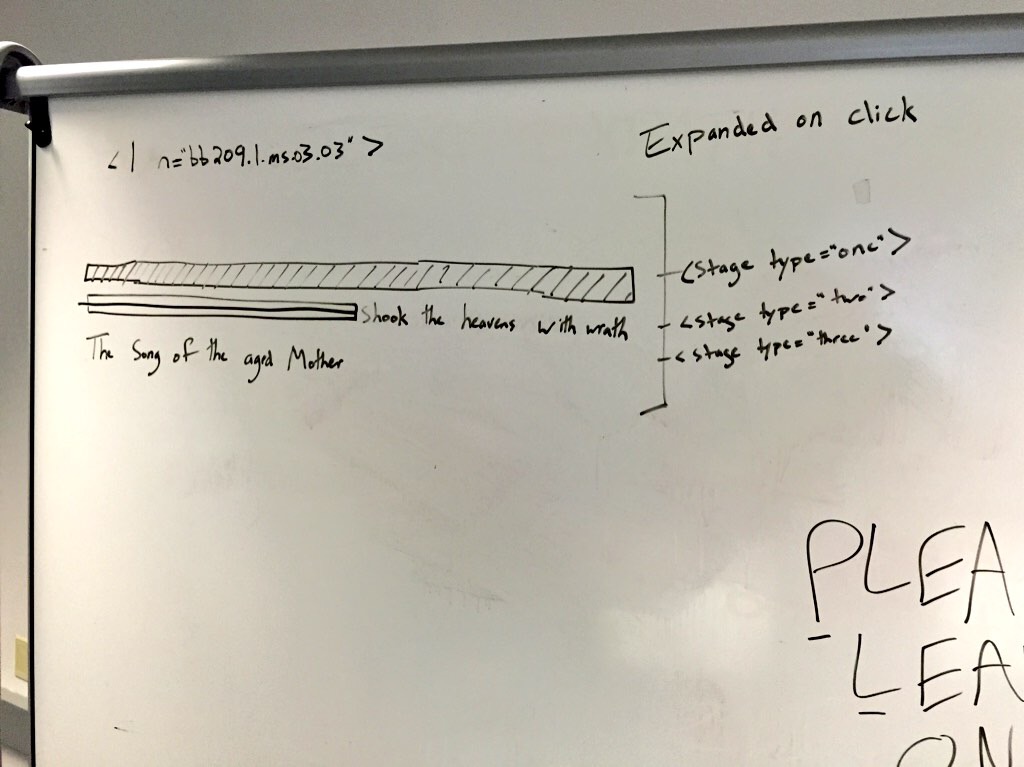One of the main ways that we organize Blake Archive works while encoding is through “line groups”, an element represented by <lg> in our BADs (Blake Archive Description). Here’s the formal definition from our documentation:
<lg>. This element identifies line groups–i.e., blocks of text on the object, such as stanzas or paragraphs. For verse, simply use <lg>, but for prose text (i.e., not poetry), use the type with value “prose”: e.g., <lg type=”prose”>.
As BAND has been preparing typographic works for publication, we have encountered a number of new transcription, display and encoding problems related to “secondary text” (discussed most recently by Eric here and Megan here) including one that questions the status of our beloved <lg>. So, riddle me this Ye Transcription Gods, if poetry is <lg> and prose is <lg type=”prose”>, then what is text that is neither poetry nor prose? For example, most of our typographic works include a running header across the top of the page, how should we categorize that?
Continue reading

